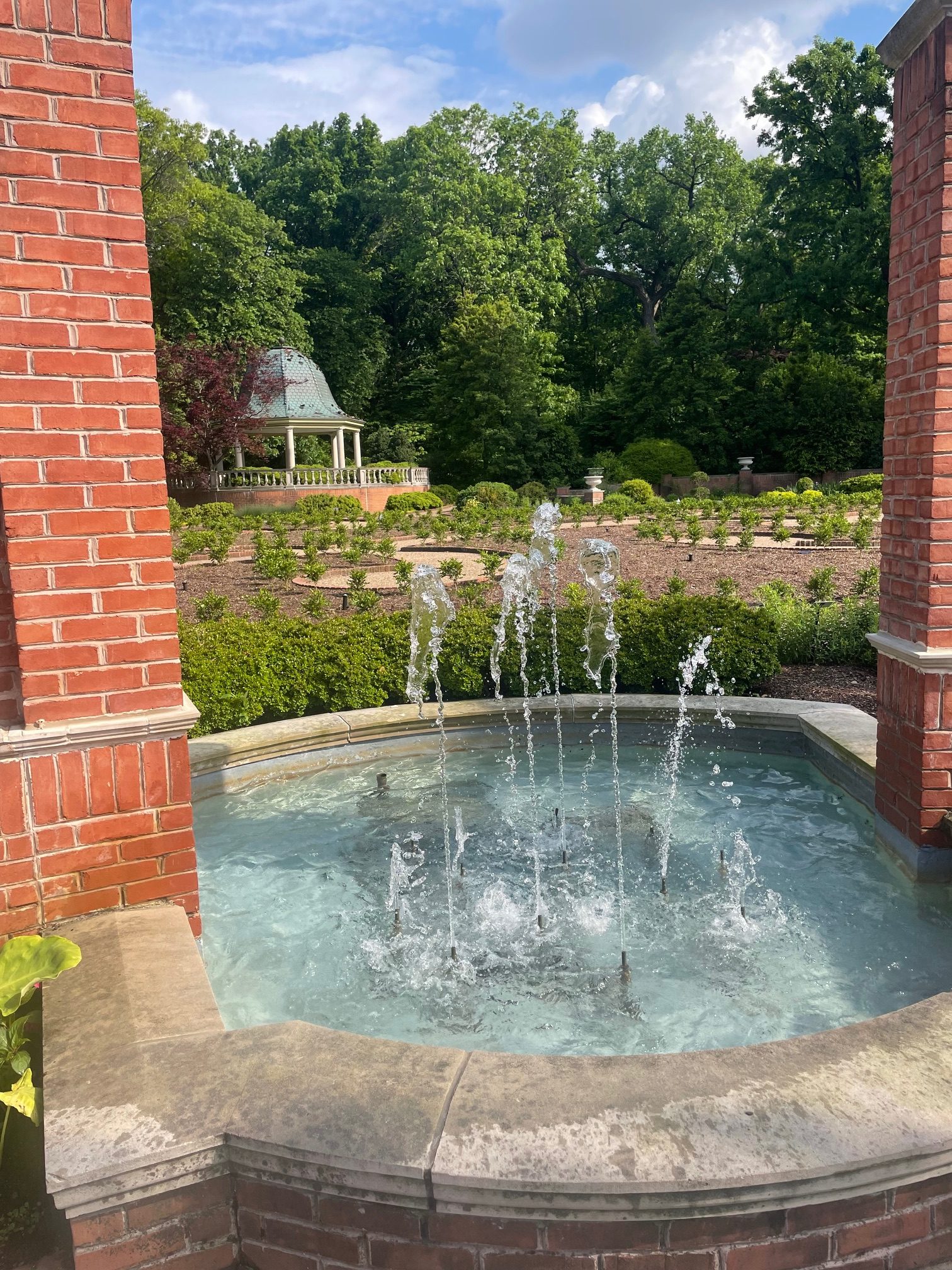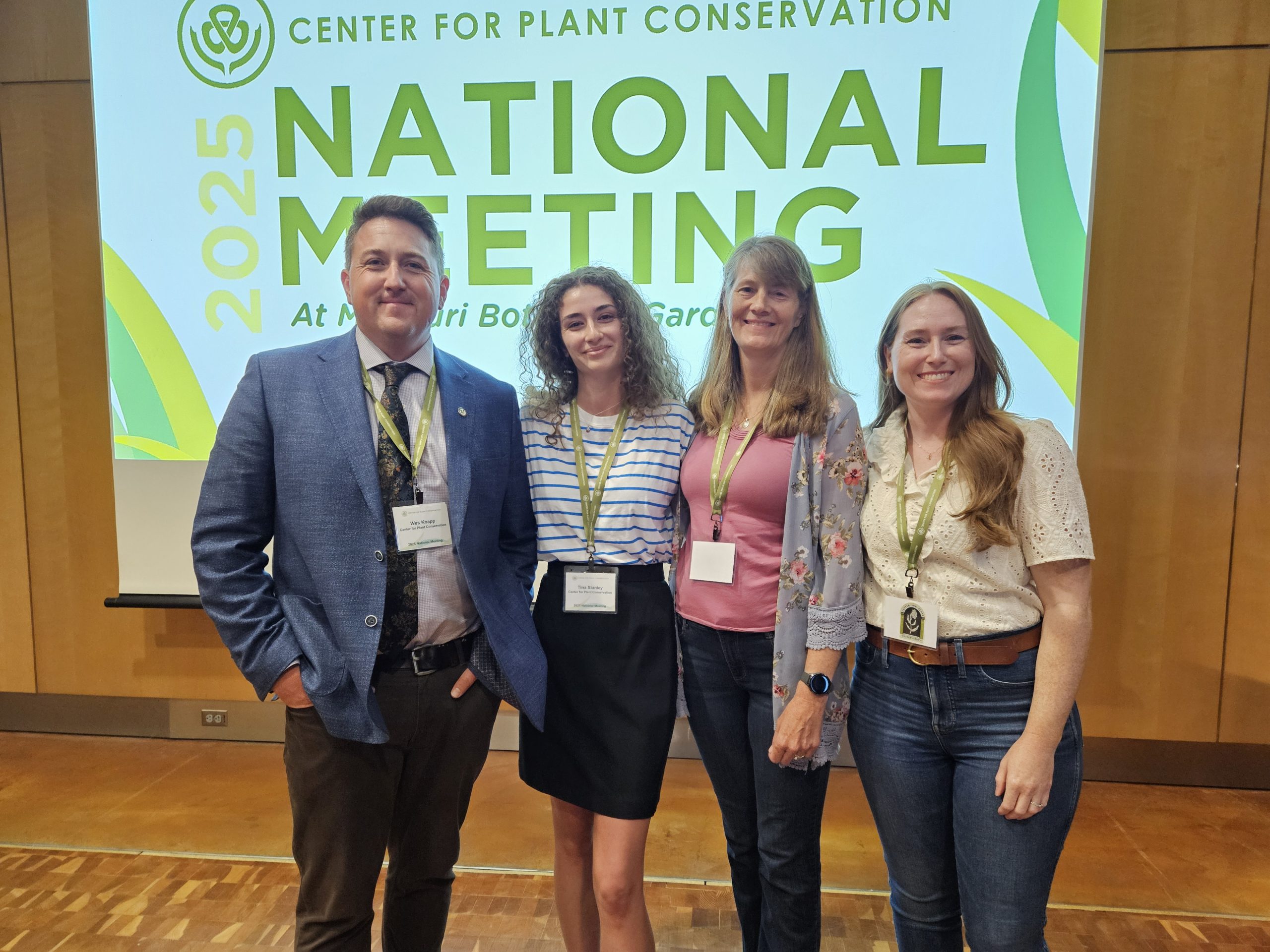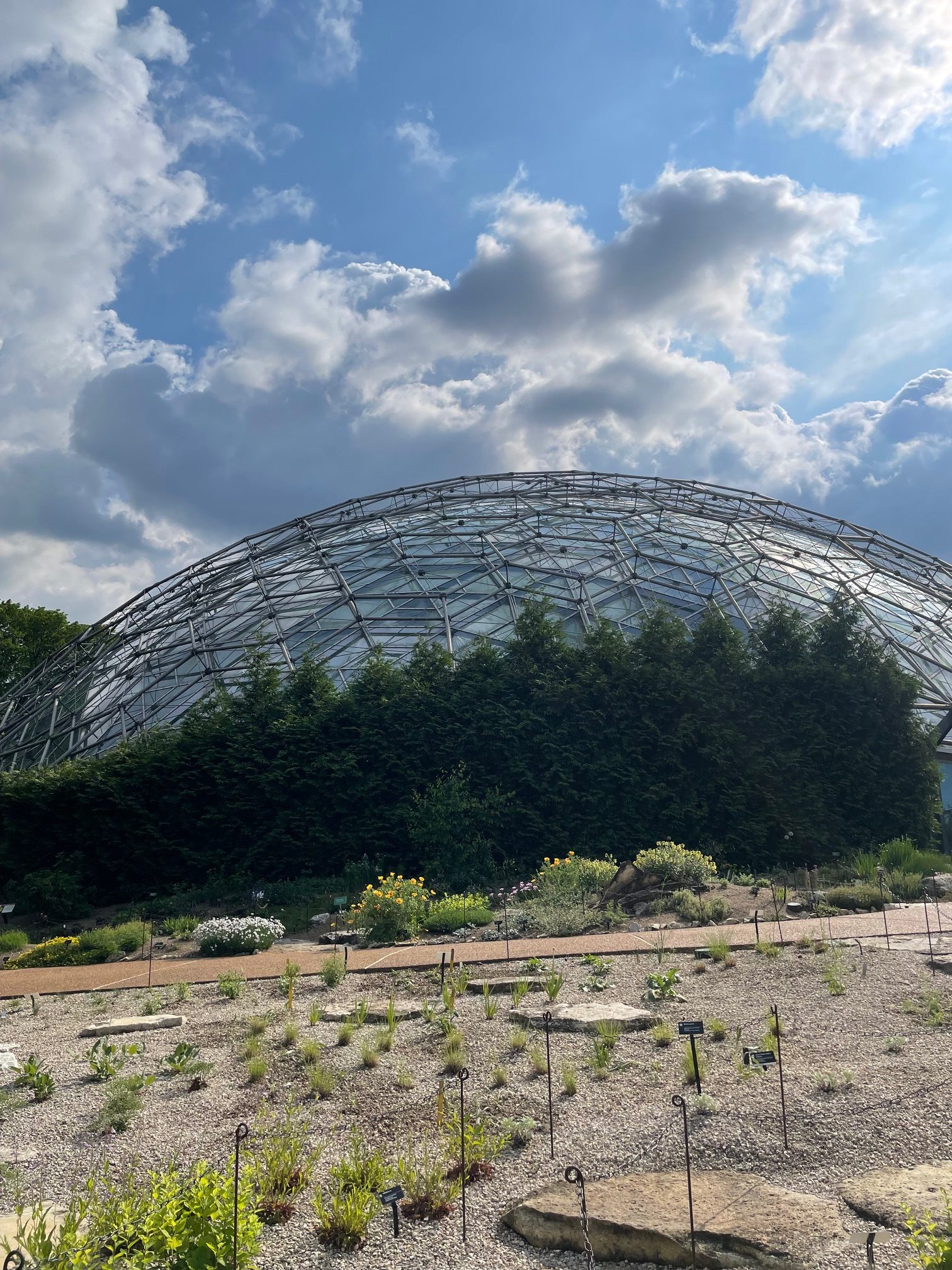Leadership, Legacy, and Looking Ahead: Highlights from the CPC National Office
At the 2025 National Meeting, CPC staff presented the latest happenings underway at the National Office. CEO Dr. Wes Knapp delivered a presentation sharing stories from his botanical career and reinforcing CPC’s mission to prevent plant extinction. Complemented by strategic updates from Director of Communications and Public Programs Shannon Fowler and Conservation Program Manager Tina Stanley, the CPC Science and Programs session offered an energizing look at both the people and the programs driving CPC’s impact forward.
A Career Rooted in Purpose
In his presentation, CEO Dr. Wes Knapp shared a personal and powerful narrative tracing his path from early field botanist to national conservation leader. His journey began in Maryland’s Eastern Shore, where he was tasked with identifying rare plant habitats—a role that shaped his passion for protecting imperiled species and deepened his respect for the complexity of botanical systems.
A formative experience came with Nutall’s mugwort (Micranthemum micranthemoides)—the only extinct plant in the Maryland flora. Though small and cryptic, the species had an outsized influence on Knapp’s career. “It’s the opposite of charismatic megafauna,” he joked. “But it rooted my interest in extinction and preventing it.”
Knapp spoke passionately about the role of taxonomy as the foundation for conservation, especially for rare and overlooked species. “You can’t conserve what you can’t correctly identify,” he noted, highlighting a field experience where he and a colleague rediscovered a distinct Juncus species that had been taxonomically lumped under a more common one. This story illustrated how taxonomic clarity can lead to better protection for species teetering on the edge of recognition—and survival.
Importantly, Knapp also called attention to the convergence of ex situ and in situ conservation work, noting that long-term plant protection requires both strategies to work in tandem. Fieldwork, research, seed banking, and public policy are not isolated endeavors, he explained—they are parts of a larger, interdependent system. “The best conservation outcomes come when these efforts inform and strengthen each other,” he emphasized.
His talk closed with a reflection on the human side of conservation: the mentors who guided him, the colleagues who challenged him, and the CPC network that has long inspired him. “We’re not just conserving species,” he said. “We’re conserving knowledge, relationships, and hope for the future.”

Network Growth & Strategic Expansion
Director of Communications and Public Programs Shannon Fowler shared impressive growth statistics for the CPC Network of Conservation Partners. From just 14 institutions at its founding in 1984, CPC now includes 82 partners spanning 30 U.S. states and territories as well as international partners based in Canada, the U.K., and Australia.
Since the last National Meeting in May 2024, CPC has welcomed three new partners:
-
Santa Fe Botanical Garden
-
University of Florida’s Department of Environmental Horticulture
-
Jacksonville Zoo and Gardens
This expansion is part of a deliberate strategy to fill geographic gaps (such as the Intermountain West) and pursue mission-aligned partnerships that strengthen conservation impact.
Listening and Learning from the CPC Network
To support this growth and keep communication flowing, CPC launched a new annual survey to gather input from both institutional and individual partners. “The goal,” Fowler explained, “is to implement a feedback mechanism where we can hear about our partners’ needs and priorities—and evolve our resources accordingly.” Survey respondents will help shape CPC’s programming, identify collaboration opportunities, and guide future improvements.
Tools for Action: National Collection Database Updates
Conservation Program Manager Tina Stanley shared exciting updates to CPC’s data platforms, with a focus on enhancing accessibility, integration, and partner collaboration. The National Collection database—a dynamic resource that tracks approximately 5,000 rare North American plant species, primarily G1-Critically Imperiled and G2-Imperiled plants with some regionally rare subspecies of high conservation importance—continues to grow in both content and functionality. Currently, around 2,700 species are represented in conservation collections across the CPC network. Each species’ Plant Profile on SavePlants.org features taxonomy, rarity ranks, and up-to-date conservation actions submitted by partners.

To improve user experience, CPC has launched a new table view interface for partners, streamlining the process for viewing and editing plant profiles and conservation updates.
Additional updates on the horizon include:
-
Bulk conservation updates: Soon, partners will be able to submit conservation updates in bulk—a particularly helpful feature for institutions participating in CPC-supported grant programs where updates are required deliverables.
-
Integration with the CPC Reintroduction Database: Projects linked to the public-facing Reintroduction Registry already display on plant profiles, but upcoming improvements will allow these linked projects to automatically generate a conservation update. This ensures conservation actions like “Reintroduction” are accurately and consistently reflected in species records.
-
Horticultural protocol expansion: Further ahead, CPC is working to integrate detailed germination, propagation, and seed bulking protocols directly into plant profiles. This work is supported by the CPC–Department of the Interior Intermountain West Rare Plant Seed Collection grant, which funds both protocol development and a new database system that will connect seamlessly with National Collection records.
Together, these tools are designed to support the CPC network in documenting and sharing conservation actions—ensuring the data is not only preserved, but put to work in saving plants from extinction.
_________________________________________________________________
From personal stories to programmatic milestones, these presentations reflected CPC’s enduring mission—and its growing community. With strong leadership, strategic partnerships, and the passion of its members, CPC continues to advance the science—and the story—of plant conservation in North America and beyond.


